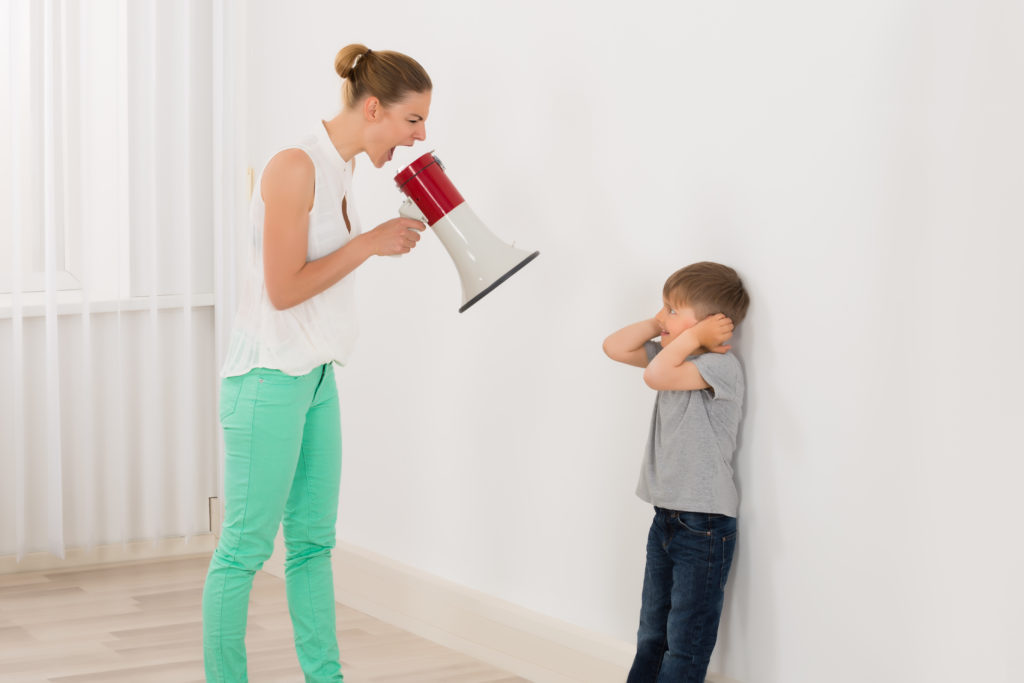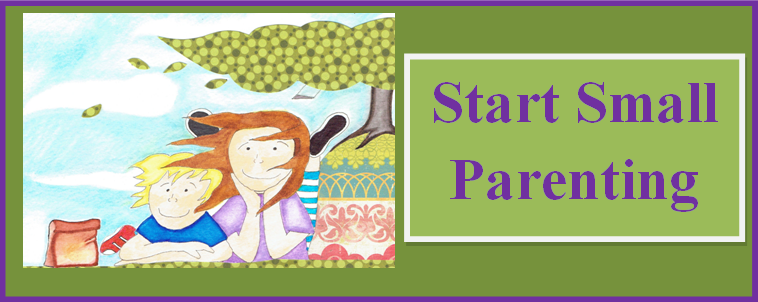
Periodically, I am emailed parenting questions. Today, I’d like to share a recent question I received.
Q. Our family yells way too much. Sometimes, I think it’s the only way we know to communicate. I’m afraid I’m responsible for the kids’ yelling because I yell. I hate it when I yell, but it works. I need some other suggestions.
Emily P., Grass Valley, CA, Mom of two
A. Thanks for writing in. When families get to yelling at each other, it often starts small and escalates. This pattern can become a habit. When parents yell, they get family members to do things because in the short term, punishment often works. A lot of people don’t consider yelling a form of punishment, but it is. Webster says that punishment is rough treatment or handling inflicted on or suffered by a person or thing. The immediate results of punishment have a cost: child feels unsafe, triggered fight/flight response, defiance, fear, confusion, or an inability to develop self-discipline.
There are positive alternatives to yelling.
Parent Commitment
Change the culture of yelling in your family. Make a commitment not to yell. Have a family meeting or family gathering and announce to your partner or family that this is the goal you have set for yourself. You will also try your best to teach it to your family. “I’m going to become a more respectful person and parent. My family deserves that. I will try not to yell or threaten. I’ll find a better way. When I make a mistake and do yell, call it to my attention in a quiet and respectful way. Then, I can try again.” Post your new agreement in a central place, like on the refrigerator door
Inside Voice
When the noise level in your home escalates, maybe your nerves do, too. Curt, angry replies can occur in response to over-stimulation or loud voices.

Make a change by teaching your children three voice levels.
a. Playground voice: The outside voice used to yell across the playground to a friend or call down from the monkey bars.
b. Speaking Up Voice: The voice level used when talking in class at school or to a group. It’s louder than normal, loud enough so everyone can hear, but not as loud as the playground voice.
c. Inside Voice: This voice can be heard for a short distance, about the length of your arm. It’s the voice for doing and saying anything inside.
Parents often tell their children to be quiet or use a softer voice. But telling is not teaching. Children need a chance to understand the request, and especially in the case of learning self-control, plenty of chances to practice. At a Family Meeting or when everyone is gathered, give the whole family a chance to practice all three voice levels.
The Loud to Soft Game
It can be hard for kids to transition from a loud outside activity to a quieter one inside. Try a volume game. Starting on the porch outside, have your children yell a phrase-of-the-day loudly. It could be some funny words they’ve put together – “Larping Legos” or “I love gummy bears.” While still outside, they yell the phrase. With each step toward the front door, they lower the volume until they are saying the phrase at half the original volume. My son liked to take it to extremes, whispering and tiptoeing right to the kitchen table.
Close the Distance: If you have ever called to a family member on the other side of the house, you had to raise your voice. No matter how congenial the content, if your voice is loud, you sound like you are yelling. Then the other person yells back. Pretty soon there is a shouting match. Neither person was initially upset, but anger begins to rise as no one can understand the other. How can you use your Inside Voice if each person is too far away to hear it?
Close the Distance – that is, go to where the person you want to communicate with can see and hear you. You can also teach your child to come to you when you call them. Once you Close the Distance, use your Inside Voice. Closeness in proximity allows both speakers to use a peaceful, easy volume.
Try this Close the Distance exercise:
- a) When your child is on the other side of the house, try making a request. Do not Close the Distance.
- b) The next time you have a request, go to the halfway point between you and your child.
- c) The next time after that, Close the Distance. Go all the way to where your child is and use eye contact to make the request.
Notice the difference in these three experiments.
A Quiet Gesture
“Be Quiet” yelled at the top of your voice to be heard over children’s voices only adds to the bedlam. Instead, we came up with a gesture in our family. If anyone is too loud, we bring up both hands by our face, with fingers splayed open wide (Jazz hands!), our mouth and eyes wide open, too, in a startled expression. This makes the other person laugh every time and serves as a great pattern interrupt to the escalating sound level. It’s amazing how such a simple action can have such a big effect – and how much the tone of respect can be heard when voices are calm.

Break the habit
Give positive Credit Reports whenever you notice a family member trying a new way.
- “You were so mad at your sister. You didn’t yell, though. You used a calm voice to tell her to stop going in your room.”
- “You came to find me to talk about the soccer game. Thanks for Closing the Distance.”
If these ideas don’t affect the noise level and frustration in your home, have a family meeting and come up with your own plan. Be silly and playful. That’s also a good time to determine what your family gesture will be when someone is too loud. Enjoy more calm connection.


Love this article. I remarried and blended families 2 years ago. My husband and his girls always talked in grumpy annoyed tones toward each other and yelled a lot. Didn’t realize this was so prevalent until my girls and I moved in. I have been working hard on changing this. The teenager got madder. : ( And thinks I’m trying to change them. But my children are young and I didn’t want them to think this is ok. It does cause anxiety and unnecessary stress. Love these tools. If you have any more suggestions on tone and how we talk to each other i.e. mean talk, I would love that!
Hi Jolie: Great to hear from you. It can be such a challenge working through teenage issues coupled with everyone’s adjustment to new family members. Creating a culture of respect is essential. One way is to have regular Family Meetings where each voice matters, needs can be addressed, and there is a growing sense of well-being and belonging during this time of great change.
Check out this post: Family Meetings: Do You? http://startsmallparenting.com/family-meetings-do-you-2/
I recommend having several basic meetings to introduce the idea and give a chance for everyone to see that this is a safe space. Then I would encourage you to discuss and clarify your family values at one meeting, posting what the family decides are the most important at this time. At still another meeting, I would address the issue of family members speaking respectfully to one another.
Check out this post: My Child is Rude. http://startsmallparenting.com/my-child-is-rude/
The teen in your life is right on track with her behavior as she experiments with push back against parental control, tests rules, and experiments with rude or angry tones and comments. As the loving adults who know this, you and your partner can resist reacting with harsh consequences, anger, or anxiety. Stay as calm as you can, even amiable. Use your partner to release some of your emotional reactions at a later time, instead of taking them out on the teen. Mirror Back the emotions you see rising to the surface without minimizing or trying to change them. This will provide a safe emotional space for her to experiment with this challenging, growing time.